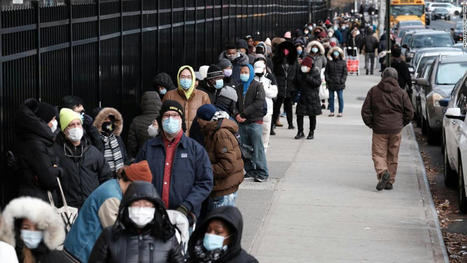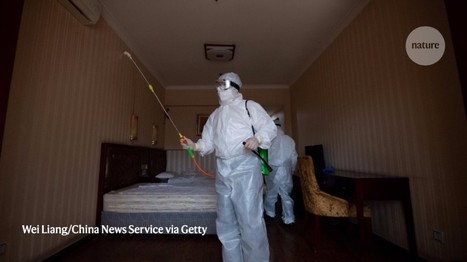The CDC shortened the recommended times that people should isolate when they've tested positive for Covid-19 from 10 days to five days if they don't have symptoms -- and if they wear a mask around others for at least five more days. The CDC also shortened the recommended time for people to quarantine if they are exposed to the virus to a similar five days if they are vaccinated. People who are fully vaccinated and boosted may not need to quarantine at all, the CDC said. "Given what we currently know about COVID-19 and the Omicron variant, CDC is shortening the recommended time for isolation from 10 days for people with COVID-19 to five days, if asymptomatic, followed by five days of wearing a mask when around others," the CDC said in a statement. People whose symptoms are getting better may also leave their homes after five days so long as their symptoms are improving, the CDC said. People who have a fever should stay home until the fever clears up, the CDC added. "The change is motivated by science demonstrating that the majority of SARS-CoV-2 transmission occurs early in the course of illness, generally in the 1-2 days prior to onset of symptoms and the 2-3 days after. Therefore, people who test positive should isolate for five days and, if asymptomatic at that time, they may leave isolation if they can continue to mask for five days to minimize the risk of infecting others." Quarantine refers to the time people stay away from others if they are exposed to a disease but not yet testing positive or showing symptoms. CDC changed those recommendations, too. "For people who are unvaccinated or are more than six months out from their second mRNA dose (or more than two months after the J&J vaccine) and not yet boosted, CDC now recommends quarantine for five days followed by strict mask use for an additional five days," it said.

|
Scooped by Juan Lama |
"Alternatively, if a five-day quarantine is not feasible, it is imperative that an exposed person wear a well-fitting mask at all times when around others for 10 days after exposure," the CDC added. People who are vaccinated and boosted are usually off the hook for quarantine, CDC said. "Individuals who have received their booster shot do not need to quarantine following an exposure, but should wear a mask for 10 days after the exposure," it said. "For all those exposed, best practice would also include a test for SARS-CoV-2 at day five after exposure. If symptoms occur, individuals should immediately quarantine until a negative test confirms symptoms are not attributable to COVID-19." Dr. Anthony Fauci said the changes were aimed, in part, at keeping society running smoothly. "With the sheer volume of new cases that we are having and that we expect to continue with Omicron, one of the things that we want to be careful of is that we don't have so many people out," Fauci told CNN's Jim Acosta. "We want to get people back to the jobs, particularly the essential jobs, to keep society running smoothly," said Fauci, who is director of the National Institute of Allergy and Infectious Diseases.
Boosters greatly lower the risk that someone will get infected and pass the virus to someone else, the CDC said. "Data from South Africa and the United Kingdom demonstrate that vaccine effectiveness against infection for two doses of an mRNA vaccine is approximately 35%. A COVID-19 vaccine booster dose restores vaccine effectiveness against infection to 75%," it said. Omicron variant is spreading quickly and has the potential to impact all facets of our society," CDC Director Dr. Rochelle Walensky said in a statement. "CDC's updated recommendations for isolation and quarantine balance what we know about the spread of the virus and the protection provided by vaccination and booster doses. These updates ensure people can safely continue their daily lives. Prevention is our best option: get vaccinated, get boosted, wear a mask in public indoor settings in areas of substantial and high community transmission, and take a test before you gather." Everyone who can get a vaccine, should get one, the CDC stressed. "COVID-19 vaccination decreases the risk of severe disease, hospitalization, and death from COVID-19. CDC strongly encourages COVID-19 vaccination for everyone 5 and older and boosters for everyone 16 and older. Vaccination is the best way to protect yourself and reduce the impact of COVID-19 on our communities. Last week, the CDC updated its guidance for health care workers with Covid-19 who show no symptoms or have mild symptoms, saying they can return to work after seven days if they test negative for infection at that point. Previously, people who were exposed to Covid-19 but who had not tested positive were advised to quarantine for 14 days, and people who tested positive for Covid-19 were advised to isolate for 10 full days.
CDC guidelines available here (Dec. 27, 2021):



 Your new post is loading...
Your new post is loading...








Magic Mushroom Compound Called Psilocybin May Help Treat DepressionThe psychedelic substance found in magic mushrooms, also known as shrooms, can relieve symptoms in people with major depressive disorder, according to a new studyTrusted Source.
While additional research is needed, this study shows the clinical potential of psilocybin, particularly for treating depression that’s resistant to other therapies.
The study was published on November 4 in JAMA Psychiatry.
“This is an extremely important study that advances the study of psychedelics and mental health, but more importantly, offers a new and novel treatment for major depressive disorder,” said Dr. Rakesh Jetly, chief medical officer at Mydecine, who wasn’t involved in the new study.
Twenty-four people completed the study, which involved receiving two doses of psilocybin along with supportive psychotherapy.
Johns Hopkins Medicine researchers reported that the participant’s depressive symptoms improved rapidly, with over two-thirds responding well to the treatment.
Four weeks after psilocybin treatment, over half of the participants met the criteria for remission of their depression.